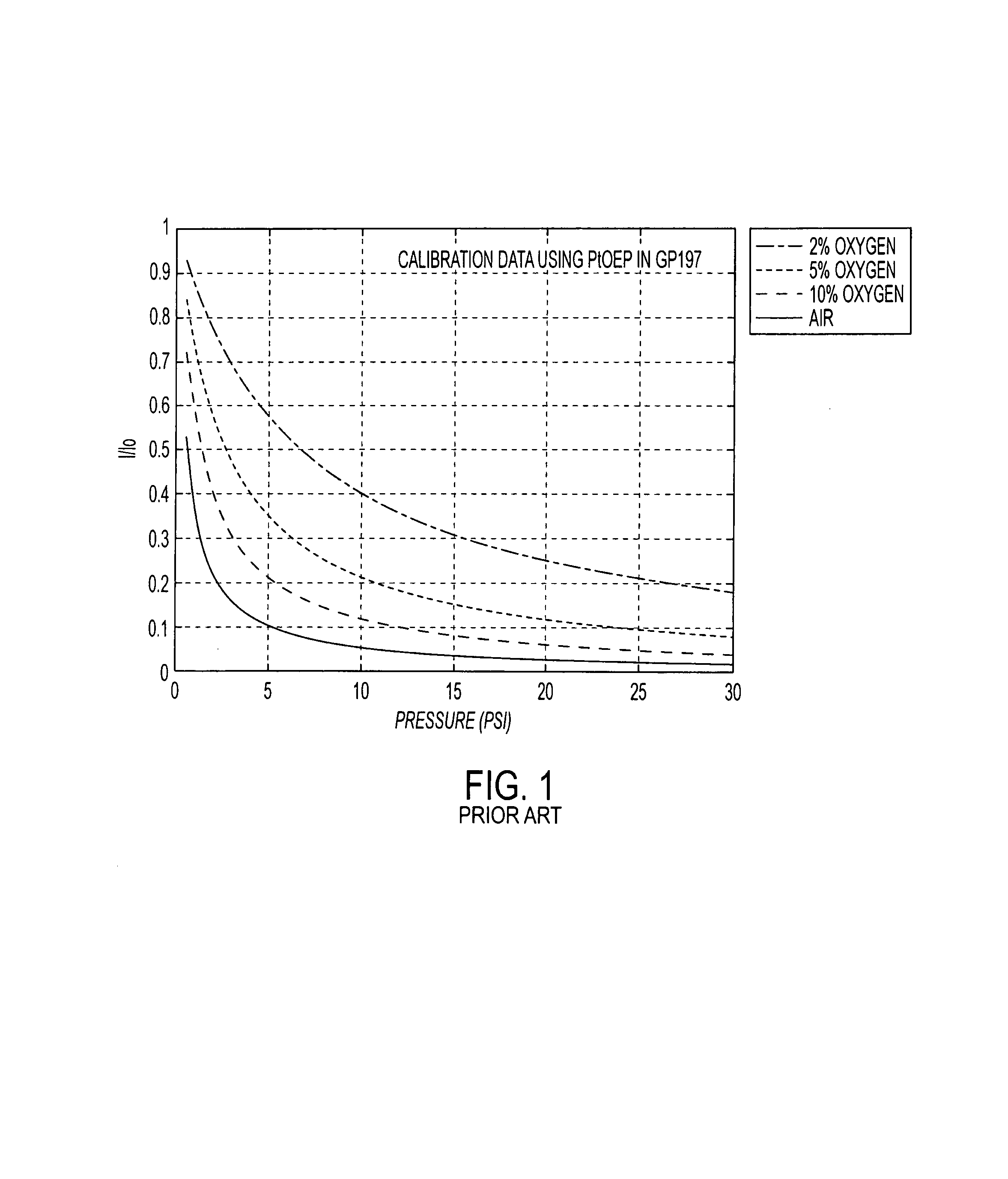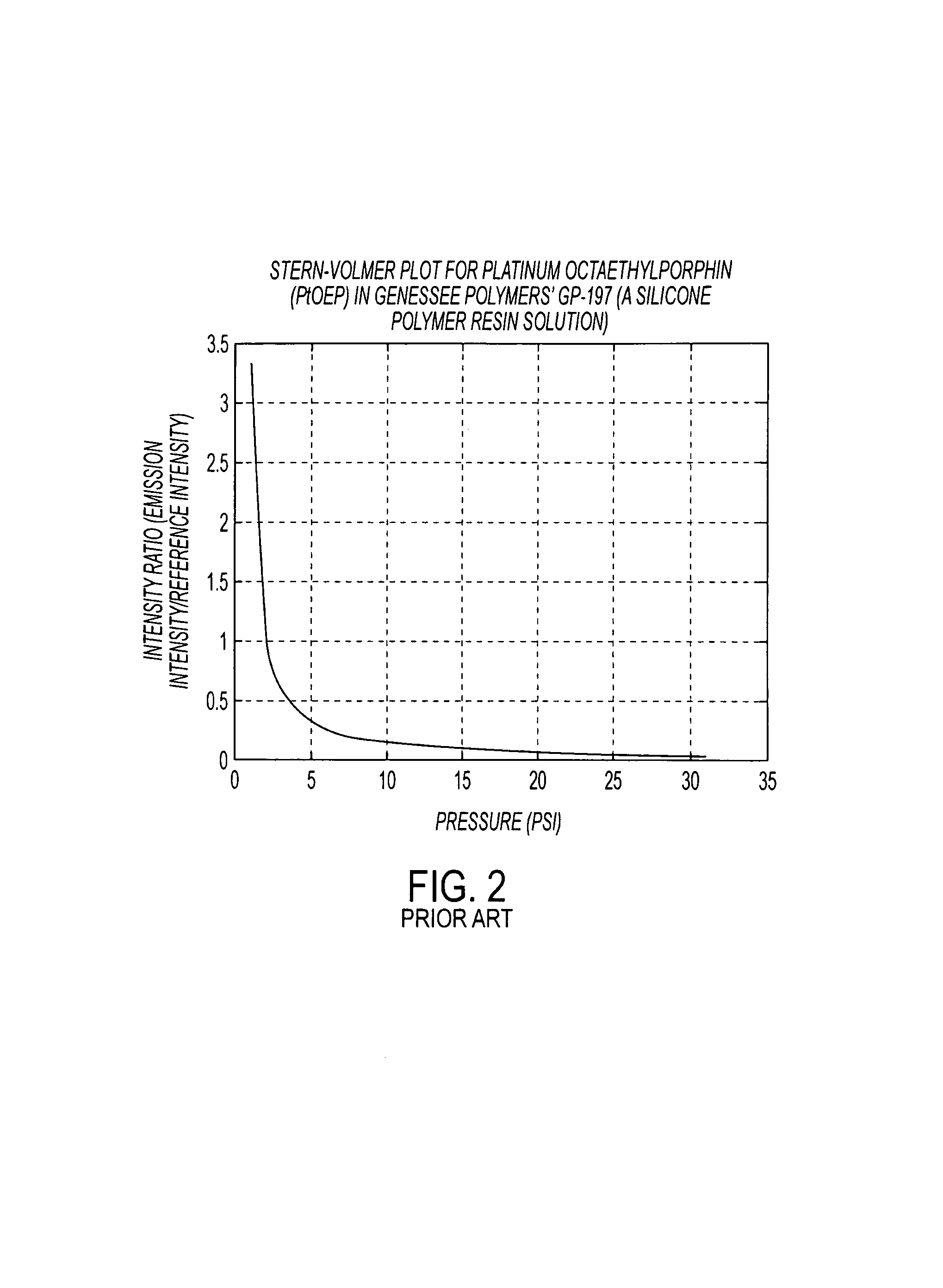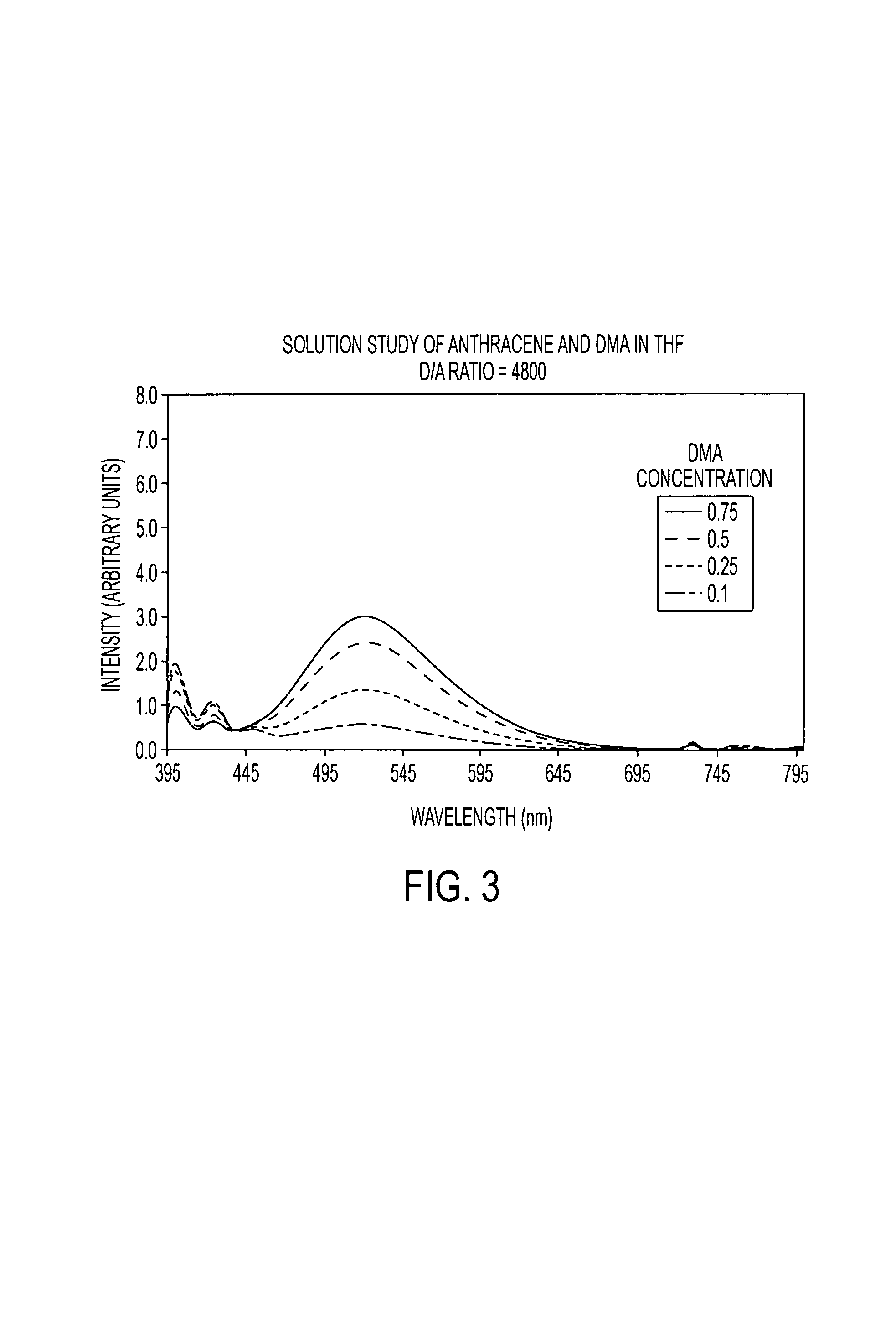Pressure sensitive material
a pressure sensitive material and pressure technology, applied in the field of polymer materials, can solve the problems of limiting the sensitivity of prior art pressure sensitive paints to oxygen, affecting the performance of pressure sensitive paints, and affecting the oxygen permeability of host matrix perturbation,
- Summary
- Abstract
- Description
- Claims
- Application Information
AI Technical Summary
Problems solved by technology
Method used
Image
Examples
examples
Polyurethane Pressure Sensitive Material Example Synthesis:
[0028]A monomer mix of PPG (molecular weight: 2000 grams / mole; 8 grams, 0.004 moles) and dimethylaniline diol (DMAD) (molecular weight: 209.29 grams / mole; 1.672 grams, 0.008 moles) was added to a 125 ml 3 neck flask with 40 uL of dibutyl tin dilaurate (DBTDL) as catalyst. The flask was fitted with a condenser, an inlet for dry nitrogen, and an addition funnel. The flask was immersed in an oil bath and the contents were placed under a blanket of dry nitrogen. Anhydrous tetrahydrofuran (THF, 20 mL) was added through the addition funnel, and the flask was slowly heated to 70° C. At a reaction temperature of 70° C., isophorone diisocyanate (IPDI) (molecular weight: 222.29 grams / mole; 2.67 g, 0.0012 moles) and 5 mL of anyhrdrous tetrahydrofuran (THF) were added slowly through the addition funnel. The reaction mix was stirred for a total of 5 hours then cooled. The solid elastomeric product weighed approximately 12 grams and was o...
PUM
| Property | Measurement | Unit |
|---|---|---|
| molar ratio | aaaaa | aaaaa |
| pressure | aaaaa | aaaaa |
| molar ratio | aaaaa | aaaaa |
Abstract
Description
Claims
Application Information
 Login to View More
Login to View More - R&D
- Intellectual Property
- Life Sciences
- Materials
- Tech Scout
- Unparalleled Data Quality
- Higher Quality Content
- 60% Fewer Hallucinations
Browse by: Latest US Patents, China's latest patents, Technical Efficacy Thesaurus, Application Domain, Technology Topic, Popular Technical Reports.
© 2025 PatSnap. All rights reserved.Legal|Privacy policy|Modern Slavery Act Transparency Statement|Sitemap|About US| Contact US: help@patsnap.com



